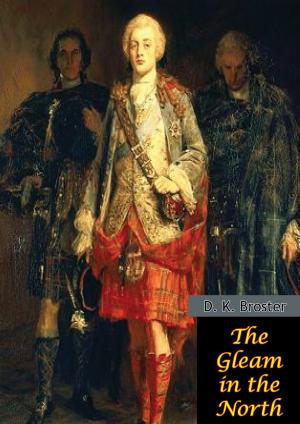Vietnam Studies - Command and Control 1950-1969 [Illustrated Edition]
Nonfiction, History, Military, Vietnam War, Asian, United States| Author: | Major General George S. Eckhardt | ISBN: | 9781782893677 |
| Publisher: | Normanby Press | Publication: | August 15, 2014 |
| Imprint: | Normanby Press | Language: | English |
| Author: | Major General George S. Eckhardt |
| ISBN: | 9781782893677 |
| Publisher: | Normanby Press |
| Publication: | August 15, 2014 |
| Imprint: | Normanby Press |
| Language: | English |
[Includes 11 charts, 1 map, and 20 illustrations]
“In combat situations prior to Vietnam, U.S. military forces had an existing command and control structure which could be tailored to accomplish the task at hand. In Europe during World War II General Dwight D. Eisenhower modified the command structures developed for the North African and Mediterranean operations to form Supreme Headquarters, Allied Expeditionary Force (SHAEF). After his departure from Bataan in 1942, General Douglas MacArthur had several months in which to design the command structure that ultimately contributed to the defeat of the Japanese...There, the command and control arrangements, which ultimately directed a U.S. Military force of over 500,000 men, evolved from a small military assistance mission established in 1950. The Military Assistance Advisory Group’s philosophy of assistance rather than command significantly influenced the development of the organization.
“This monograph describes the development of the U. S. military command and control structure in Vietnam. The focus of the study is primarily on the Military Assistance Command, Vietnam (MACV), and the U.S. Army in Vietnam (USARV). The relationships with the joint Chiefs of Staff (JCS), Commander in Chief, Pacific (CINCPAC), U.S. Army, Pacific (USARPAC), and other outside agencies are discussed only as their decisions, policies, and directives affected MACV and operations within South Vietnam. The air war against North Vietnam and naval operations of the U.S. Seventh Fleet were CINCPAC’s responsibilities and are only mentioned in regard to their impact on MACV and the forces under MACV.
“This study is not a conventional military or diplomatic history of the war in Vietnam. Rather, it is an analytical appraisal of the command and control structure.”
[Includes 11 charts, 1 map, and 20 illustrations]
“In combat situations prior to Vietnam, U.S. military forces had an existing command and control structure which could be tailored to accomplish the task at hand. In Europe during World War II General Dwight D. Eisenhower modified the command structures developed for the North African and Mediterranean operations to form Supreme Headquarters, Allied Expeditionary Force (SHAEF). After his departure from Bataan in 1942, General Douglas MacArthur had several months in which to design the command structure that ultimately contributed to the defeat of the Japanese...There, the command and control arrangements, which ultimately directed a U.S. Military force of over 500,000 men, evolved from a small military assistance mission established in 1950. The Military Assistance Advisory Group’s philosophy of assistance rather than command significantly influenced the development of the organization.
“This monograph describes the development of the U. S. military command and control structure in Vietnam. The focus of the study is primarily on the Military Assistance Command, Vietnam (MACV), and the U.S. Army in Vietnam (USARV). The relationships with the joint Chiefs of Staff (JCS), Commander in Chief, Pacific (CINCPAC), U.S. Army, Pacific (USARPAC), and other outside agencies are discussed only as their decisions, policies, and directives affected MACV and operations within South Vietnam. The air war against North Vietnam and naval operations of the U.S. Seventh Fleet were CINCPAC’s responsibilities and are only mentioned in regard to their impact on MACV and the forces under MACV.
“This study is not a conventional military or diplomatic history of the war in Vietnam. Rather, it is an analytical appraisal of the command and control structure.”
![Cover of the book Vietnam Studies - Command and Control 1950-1969 [Illustrated Edition] by Major General George S. Eckhardt, Normanby Press](https://www.kuoky.com/images/2014/august/500x500/9781782893677-krRu_500x.jpg)







![Cover of the book A Lady’s Diary Before and During the Indian Mutiny [Illustrated Edition] by Major General George S. Eckhardt](https://www.kuoky.com/images/2015/november/300x300/9781786253651-M81u_300x.jpg)

![Cover of the book History Of The Indian Mutiny Of 1857-8 – Vol. III [Illustrated Edition] by Major General George S. Eckhardt](https://www.kuoky.com/images/2014/june/300x300/9781782892090-YYNy_300x.jpg)

![Cover of the book The Tale Of Two Bridges And The Battle For The Skies Over North Vietnam [Illustrated Edition] by Major General George S. Eckhardt](https://www.kuoky.com/images/2014/august/300x300/9781782898924-xfHj_300x.jpg)


